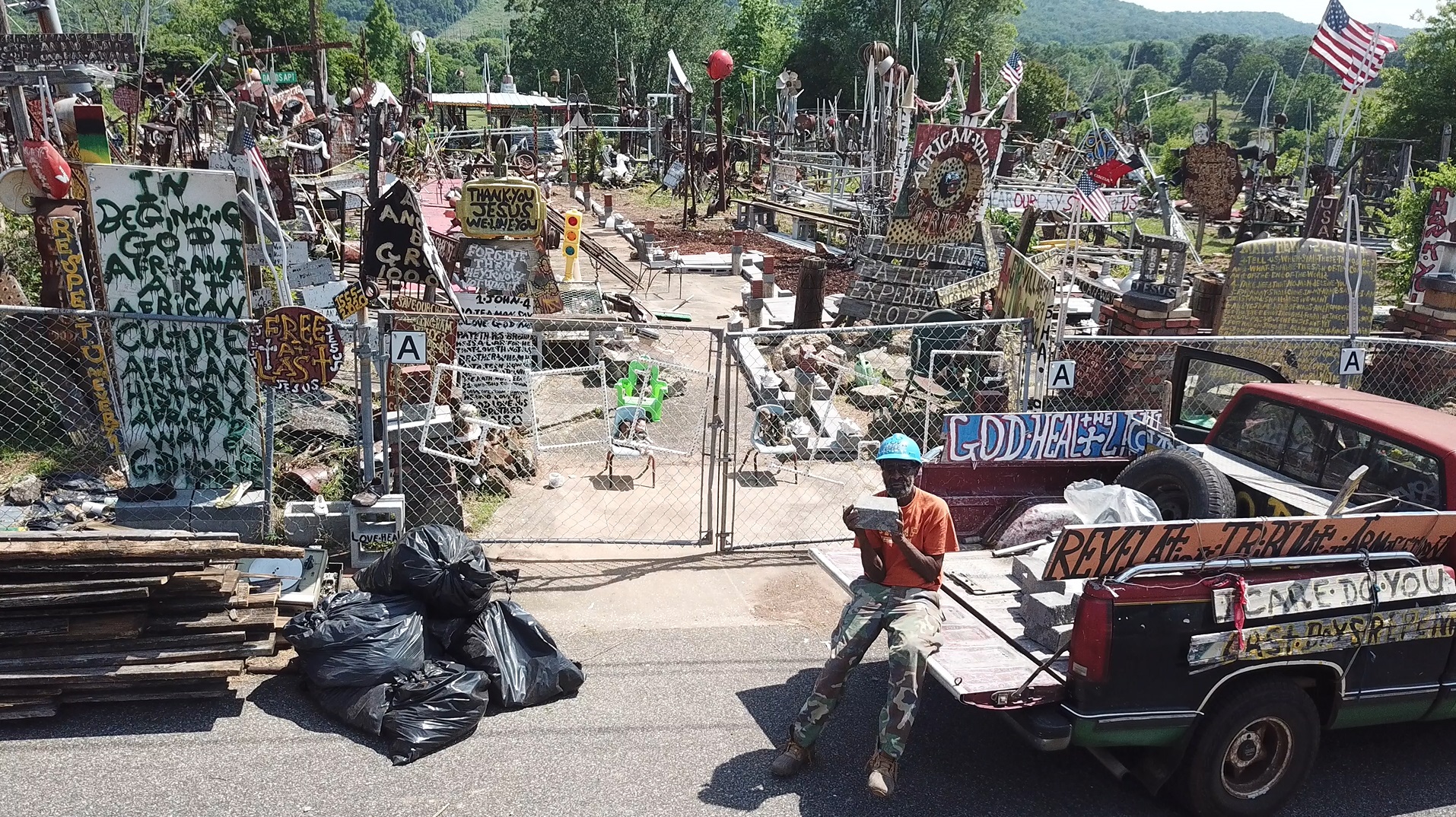TUSCALOOSA, Ala. – Using cutting-edge imaging technology and digital curation, a project involving The University of Alabama will allow the work and stories of a well-regarded Southern artist to be preserved digitally for future generations.
The mapping and digital documentation of artist Joe Minter’s work will be the first large-scale application of this sophisticated technology to record and preserve an art installation.
Minter, a found-object artist in Birmingham, tells the story of his life, and a cultural movement, in a collection he calls “African Village in America” built on nearly 1 acre around his home in Birmingham, Alabama. UA expertise in geographic imaging, art curation, digital cataloguing and art history is creating a digital rendering to offer immediate access to the artist’s site-specific presentation of found-object sculptures for both scholars and the public, who previously could only experience the monumental environment by visiting in person.
The project is supported by Souls Grown Deep, a non-profit that advocates for the inclusion of Black artists from the South into the canon of American art.
“As soon as I saw Joe’s work and met with him, I knew UA had to get behind it,” said Eric Courchesne, geospatial services manager for the UA Department of Geography and project lead. “We saw this as a perfect opportunity to utilize The University’s resources and technical expertise in a meaningful way. It’s a great example of how highly specialized talent from across the university can come together to solve a complex challenge.”
The end product will be a website that curates Minter’s collection while serving as an immersive experience of his entire site, including interviews about his works and the contexts that inspired them, as well as future scholarly works about the African Village.
“The goal is to make the work of Joe Minter – his artistic vision and his process – accessible for everyone,” said Emily Bibb, curator of the Paul R. Jones Museum at UA and team member.

A Black man born and raised in Birmingham, Minter experienced segregation during his childhood and worked a variety of jobs before being drafted into the Vietnam War. When he returned, the city he knew as home was the center of the civil rights movement. Over the next decade, Minter observed history in his hometown while working in Birmingham’s booming steel industry. He left in 1979 after his eyes started to fail because of asbestos. Since then, he has used art to tell his life story using the found materials of his past.
Initiated in 1989, African Village in America is part yard show, part sculpture garden, and part memorial: a transformation of the land—near two historically Black cemeteries—abutting Minter’s home. In consideration to the site’s history, Minter’s work provides recognition to both the millions of Africans shipped in bondage to America and their descendants. Works by Minter are today in the permanent collections of several leading art museums, including The Metropolitan Museum of Art, the National Gallery of Art, the Fine Arts Museums of San Francisco, and the High Museum of Art. Minter was also featured in the 2019 Whitney Biennial.
Courchesne and his team, including UA professors of geography Dr. Hongxing Liu and Dr. Doug Sherman, used drone-mounted cameras and geographic information system mapping typically used to map rivers and landscapes to take a full scan of Minter’s collection, flying both over and through the collection. Capable of capturing a detailed record of a place, the use of this technology will capture not only a bird’s eye view of the environment, but also the detailed geometry, precise size, and relative spacing of each work in space.
Over the next year, Courchesne’s team, which includes Dr. Bo Yang at San Jose State University, will process the images to present a full digital reconstruction of the site.
The images will be archived by Bibb and combined with hours of audio, video and written information about the art pieces as part of a website dedicated to Minter and his works. Visitors to the site can use that information to put the works and site in context and hear and see Minter’s own narrative.
“We want to give it a place and give it a voice. Pictures alone don’t do it justice,” said Dr. Rachel Stephens, associate professor of art history and part of the project team. “He’s a visionary artist and a storyteller. He will take visitors to the site on a journey so there’s no replacement for hearing an artist’s voice.”
Along with Bibb and Stephens, the art curation and archiving phase of the project involves Lizzie Orlofsky, a graduate student in art history, and incoming history post-doctoral scholar Jasmin Howard, who conducted the oral history interviews with Minter.
Sara Beth Bolin, communication specialist for the UA College of Arts & Sciences, contributed to this story.
Contact
Adam Jones, UA communications, 205-348-4328, adam.jones@ua.edu
Source
Eric Courchesne, geospatial services manager, ercourchesne@ua.edu
